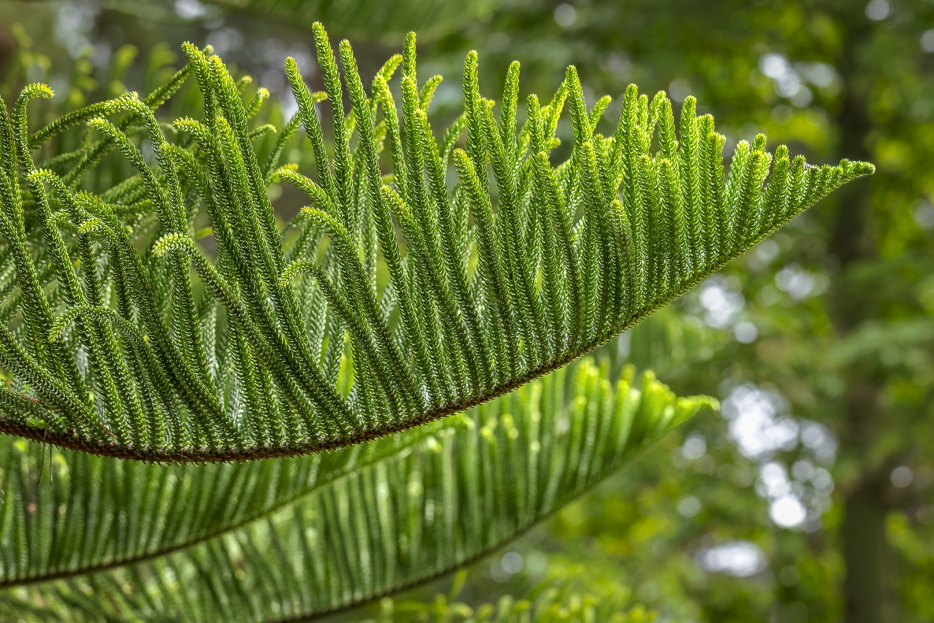
The Norfolk Island Pine (Araucaria heterophylla) is a stunning evergreen that brings a touch of the outdoors into your home. Native to Norfolk Island in the Pacific Ocean, this tree is often grown as a houseplant in cooler climates due to its ability to thrive indoors. Known for its symmetrical, soft branches and lush green needles, the Norfolk Island Pine can grow quite tall if given the proper care. While it may look like a small Christmas tree, it requires attention to detail to ensure it stays healthy and vibrant.
Here’s a guide on how to care for your Norfolk Island Pine:
The Norfolk Island Pine thrives in bright, indirect light. It enjoys plenty of light, but it should be kept out of direct sunlight, which can scorch its delicate needles. A spot near a south or west-facing window with filtered light is ideal. If you’re growing it indoors during the winter months, consider placing it under a grow light to supplement natural sunlight. If the plant doesn’t get enough light, it may become leggy, and its branches could lose their lush appearance.
Norfolk Island Pines prefer moderate watering. The soil should be kept slightly moist but not soggy. Water the plant when the top inch of the soil feels dry to the touch. Be sure to water thoroughly, allowing the water to drain out of the bottom of the pot. Avoid letting the plant sit in water, as this can lead to root rot.
During the winter months, the plant's growth slows down, so you may need to water less frequently. Overwatering can cause yellowing needles and root rot, so always check the soil before watering.
Norfolk Island Pines prefer temperatures between 60°F and 70°F (15°C to 21°C), making them well-suited to most indoor environments. They do not tolerate cold temperatures, so avoid placing them near drafty windows or doors, especially during the winter months.
These trees also enjoy high humidity. If the air in your home is too dry, especially in winter when indoor heating can lower humidity levels, you can increase the humidity around your plant by misting it regularly or using a humidifier. Another option is to place the plant on a humidity tray filled with water and pebbles, ensuring the water level is below the pot's base.
The Norfolk Island Pine thrives in well-draining, acidic soil. A standard potting mix with added perlite or sand to improve drainage is a good option. Ensure that the pot has drainage holes to prevent water from accumulating at the bottom, which can lead to root rot.
Repot the Norfolk Island Pine every 1-2 years or when it outgrows its current pot. Choose a pot that is 1-2 inches larger in diameter than the current one. When repotting, gently remove the plant from its old pot and replace the soil with fresh, well-draining mix.
During the growing season (spring and summer), the Norfolk Island Pine benefits from monthly fertilization. Use a balanced, water-soluble fertilizer that is diluted to half strength. Fertilizing helps promote healthy growth, but avoid over-fertilizing, as this can damage the plant. During the fall and winter, the plant’s growth slows, so there is no need to fertilize.
The Norfolk Island Pine generally requires minimal pruning, as it naturally grows in a symmetrical, compact shape. However, you can trim back any dead or damaged branches to keep the plant looking tidy. If the plant becomes too tall for your space, you can prune the top, but keep in mind that this may affect its shape. Always use clean, sharp scissors or pruning shears to make clean cuts.
The Norfolk Island Pine is not typically propagated from cuttings, as it is difficult to root. It is usually grown from seeds, which can be slow to germinate. If you’re interested in propagating, you can try planting seeds in a shallow tray with moist, well-draining soil and keeping them in a warm, humid environment. However, most indoor growers prefer to buy a young plant from a nursery rather than attempting propagation.
Yes, the Norfolk Island Pine is non-toxic to pets. It is safe for cats, dogs, and other animals, making it a good choice for households with pets. However, it’s always a good idea to discourage pets from chewing on the plant, as it could damage the foliage or cause minor digestive upset if ingested in large quantities.